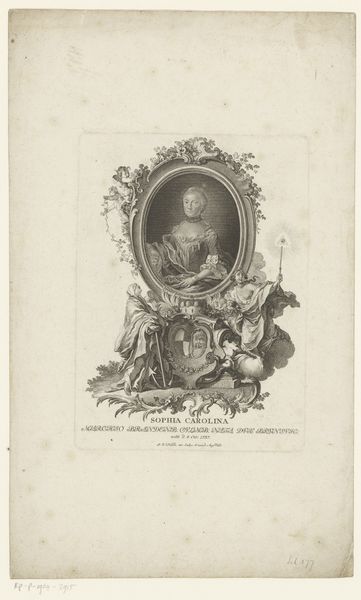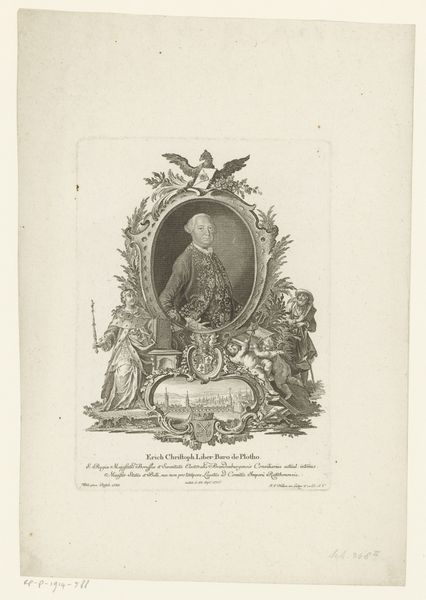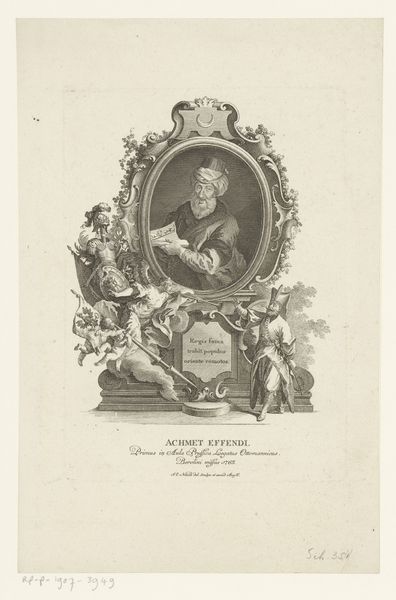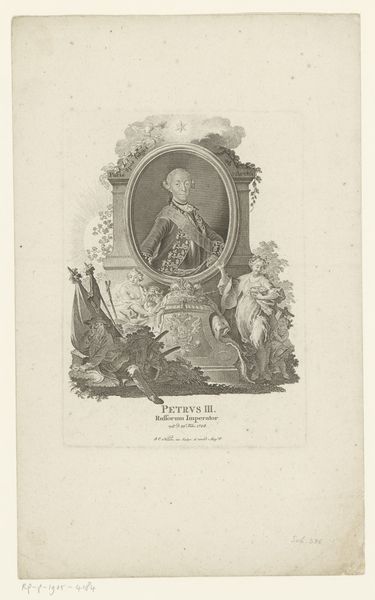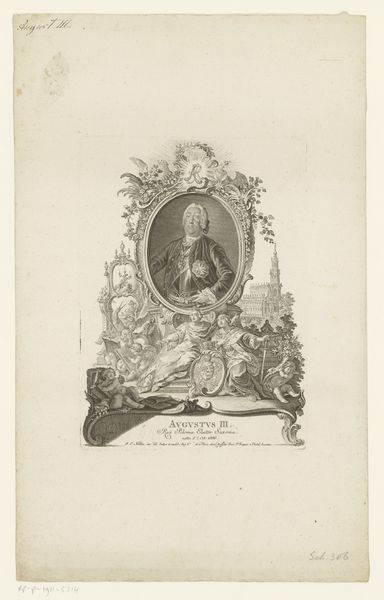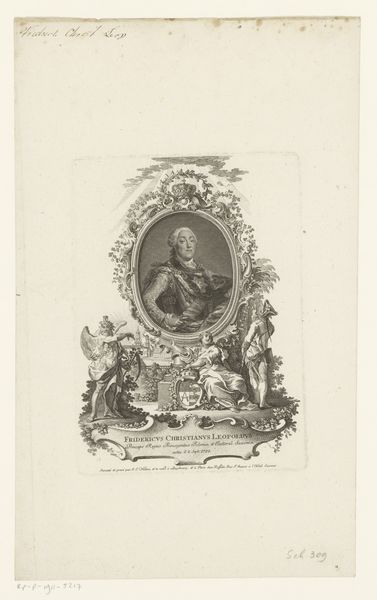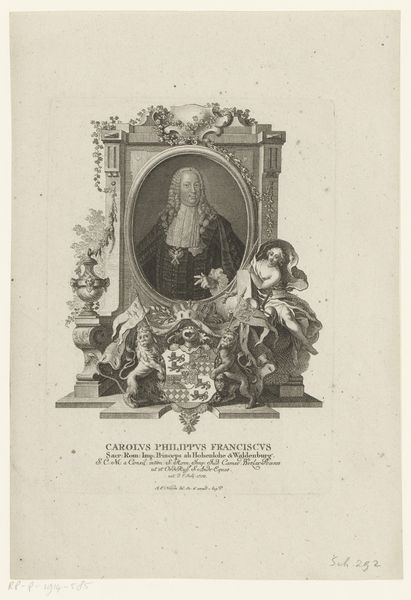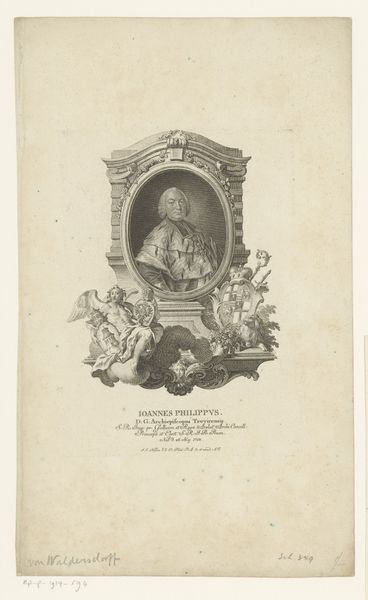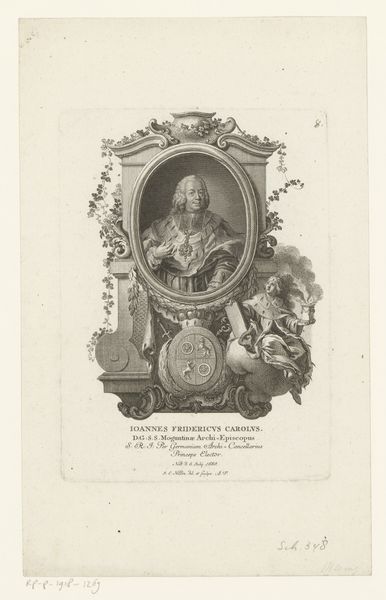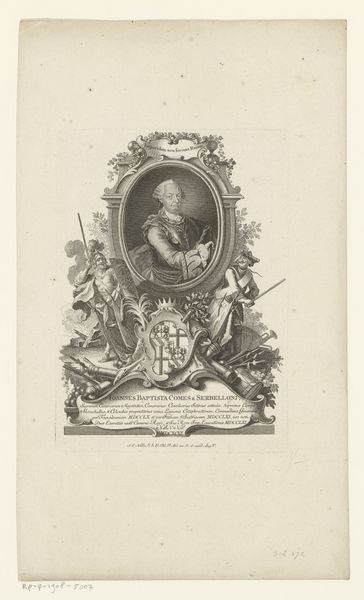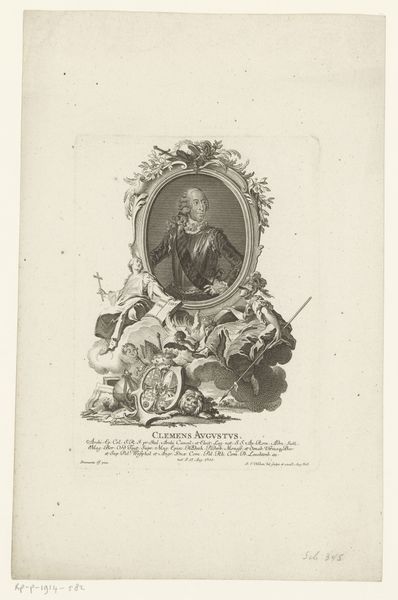
Dimensions: height 222 mm, width 160 mm
Copyright: Rijks Museum: Open Domain
Johann Esaias Nilson made this print of Friedrich August I of Saxony, sometime in the 18th century. It offers a window into the visual language of power and legitimacy prevalent at the time. Look closely at how the image creates meaning. The elaborate frame, the coat of arms, and the classical figures are not mere decoration; they are visual cues intended to convey status, heritage, and virtue. The use of Latin in the inscription further reinforces the sense of timeless authority. This was made during the early Enlightenment, and its visual language self-consciously evokes classical antiquity. Images like this were circulated widely to reinforce social hierarchies. To truly understand this image, we need to delve into the history of Saxony, and the Holy Roman Empire to which it belonged. We can ask, how did rulers use images to shore up their authority? What social conditions made these images so powerful? Fortunately, libraries and archives offer a wealth of resources for answering these questions. These give us a fuller appreciation of the social and institutional context that gives art its meaning.
Comments
No comments
Be the first to comment and join the conversation on the ultimate creative platform.
